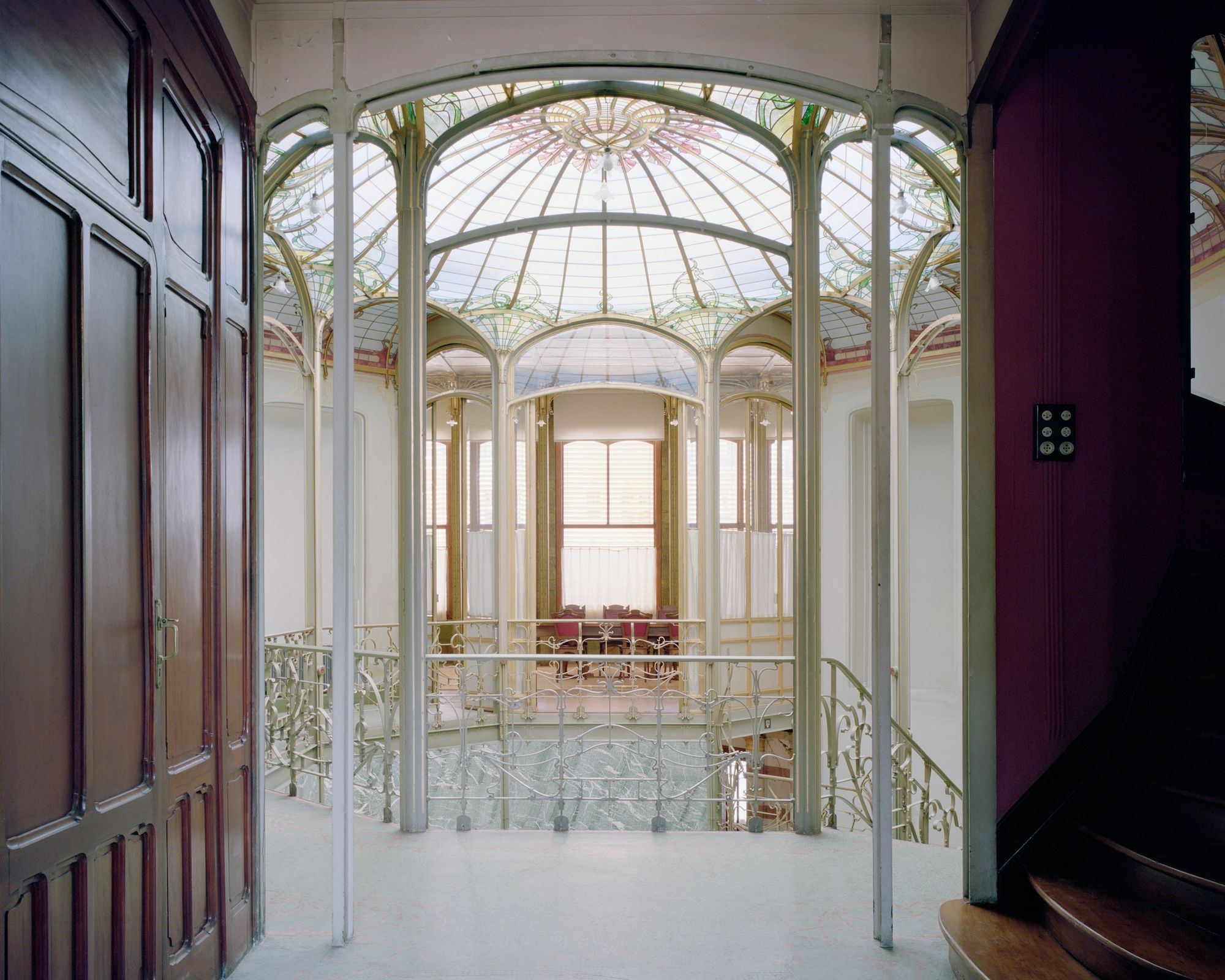DESIGN LEGENDS MAY 9 2024
by Daniella Ohad
Daniella Ohad recaps her weekly conversations with the legends of interior design

DAVID HICKS/ THE DUKE OF ABERCORN’S LIBRARY AT BARONSCOURT, 1978
Photo © The David Hicks Archive; courtesy of Rizzoli New York
Comprising one-on-one interviews with international design talents, Interior Design: Then and Now is a Spring 2024 webinar program hosted by Daniella Ohad for Christie’s Education. For the Design Miami/ Forum, Ohad recaps each interview. Read on for highlights from her conversation with London-based Ashley Hicks, architect-designer and son of interior design legend David Hicks.
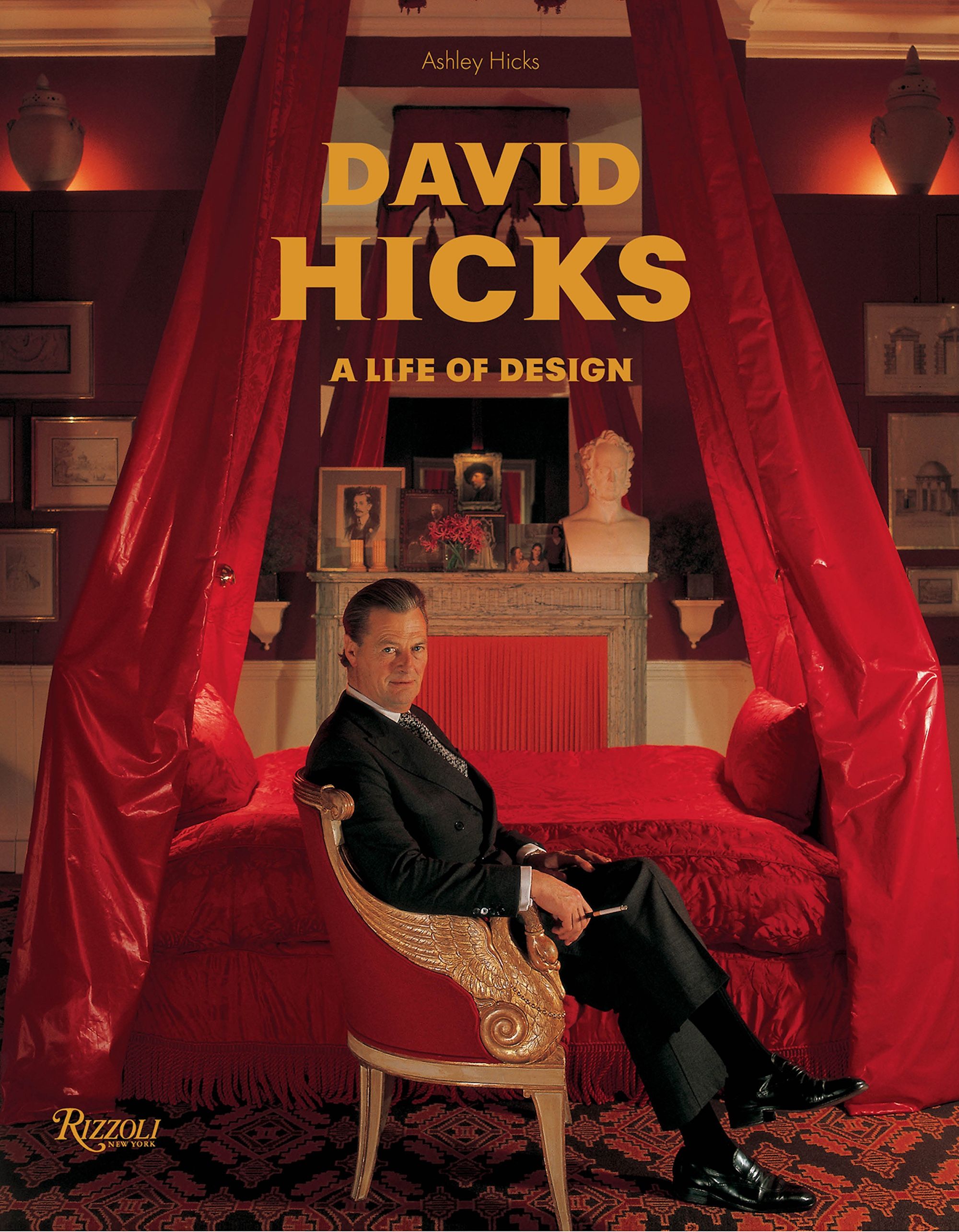
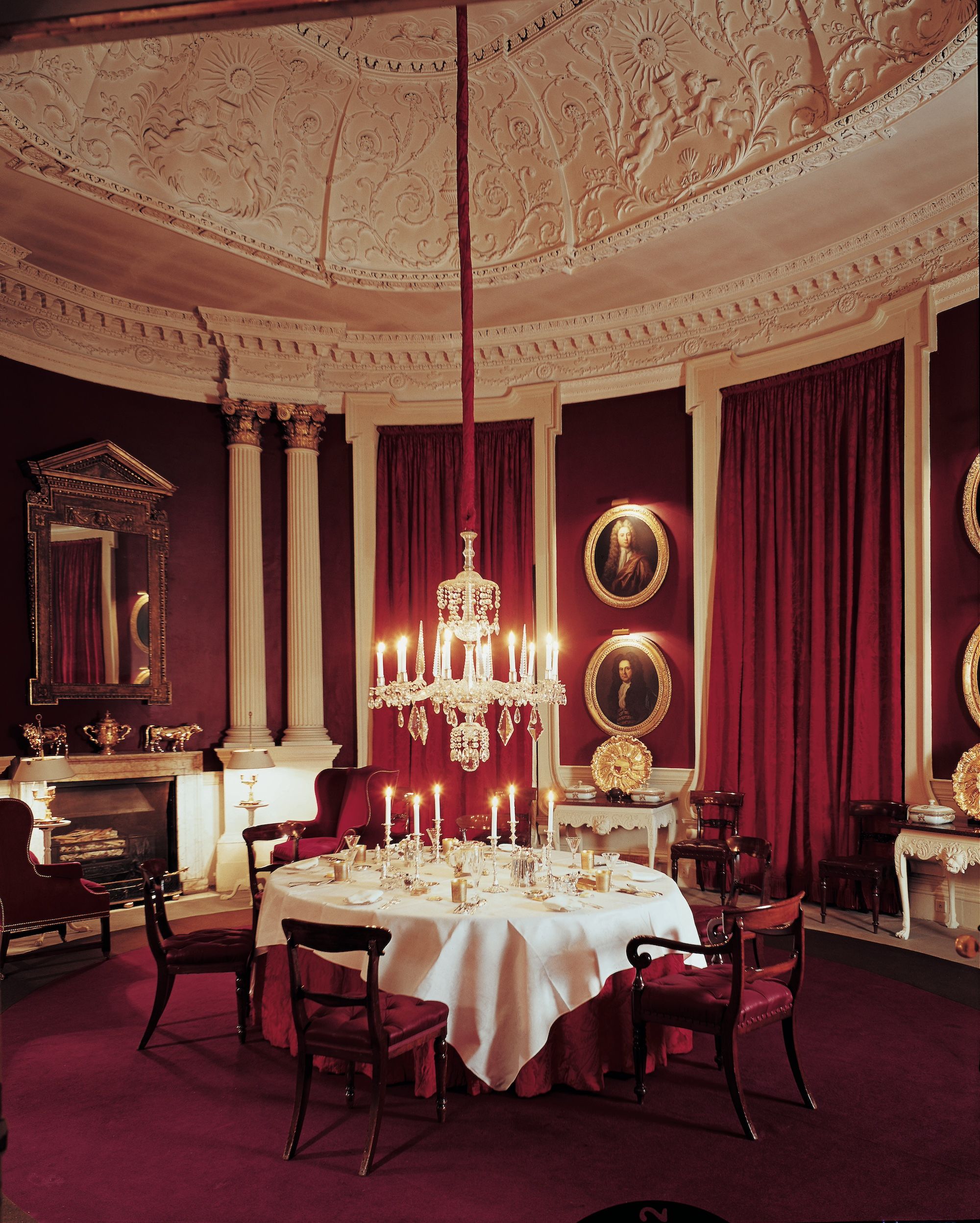
DAVID HICKS/ LEFT: COVER OF DAVID HICKS: A LIFE OF DESIGN, AUTHORED BY ASHLEY HICKS AND REISSUED BY RIZZOLI IN MARCH 2024; RIGHT: DINING ROOM IN BRITWELL HOUSE IN OXFORDSHIRE, C. 1960S
Photos © The David Hicks Archive; courtesy of Rizzoli New York
British decorator David Hicks (1929-1998) holds a special place in the pantheon of interior design thanks to the role he played in redefining the discipline between the 1960s and ’70s. Embracing bold palettes and eclectic combinations, he originated a look that propelled tastes away from the traditional English style toward something altogether new. Catering to royal, aristocratic, and celebrity clientele at home and abroad, he created some of the most charismatic and glamorous interiors of the 20th century.
For my recent Interior Design: Then and Now program, I spoke with Ashley Hicks, David’s son and a successful architect and interior designer in his own right. Ashley’s definitive monograph, David Hicks: A Life of Design, originally published in 2009, has just been reissued by Rizzoli, offering the perfect opportunity to reexamine his father’s singular legacy. Our discussion explored David’s impact as a designer, style icon, lifestyle influencer, and family man, as well as how Ashley’s design approach both reflects and diverges from his father’s oeuvre.
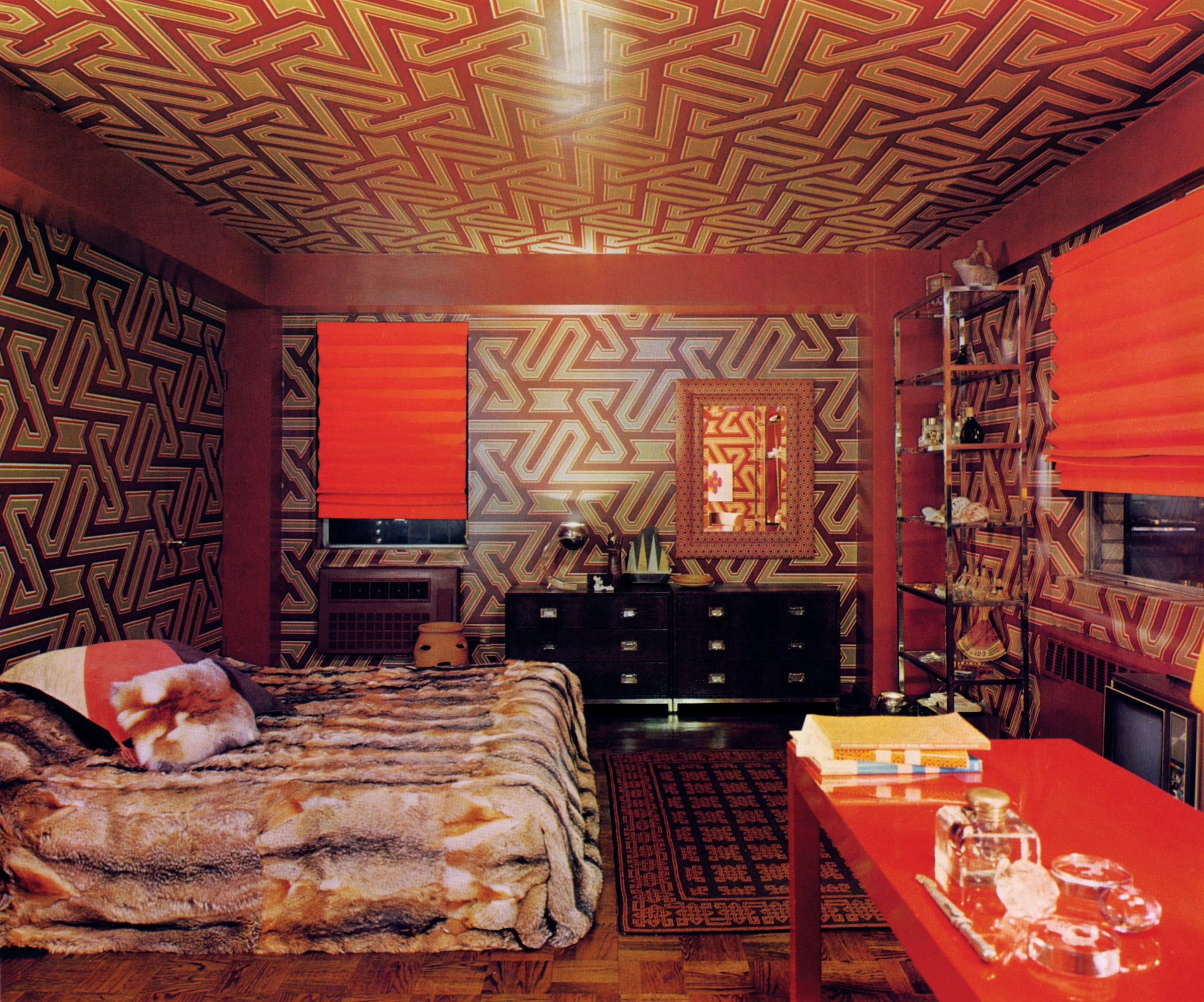
DAVID HICKS/ BEDROOM IN MANHATTAN, 1971
Photo © The David Hicks Archive; courtesy of Rizzoli New York
“Modern or traditional?” I opened my conversation with Ashley with this rather rhetorical question about his father’s work, because David’s fondness for antique furnishings has frequently obscured his career-long commitment to forging a modern idiom. Evidence of this commitment pervades his portfolio. One of David’s seminal innovations, for example, was introducing modernist furniture to English country houses, and among his visual signatures is the generous use of geometric patterns, particularly in wall coverings and textiles.
One portrait in specific—photographed in 1964 in the garden room of his country house in Oxfordshire—embodies David’s modern sensibility at its best. An 18th-century Georgian manor, Britwell House was the first home that David and his wife Lady Pamela Carmen Louise Mountbatten Hicks purchased as a married couple in 1960; David completely transformed the interior, decoupling it from the home’s traditional facade. The photo captures David posing confidently in front of the camera, leaning over a pair of sleek, steel and red leather Poul Kjaerholm PK9 chairs, surrounded by an exceedingly clean-lined, neutral-hued environment.
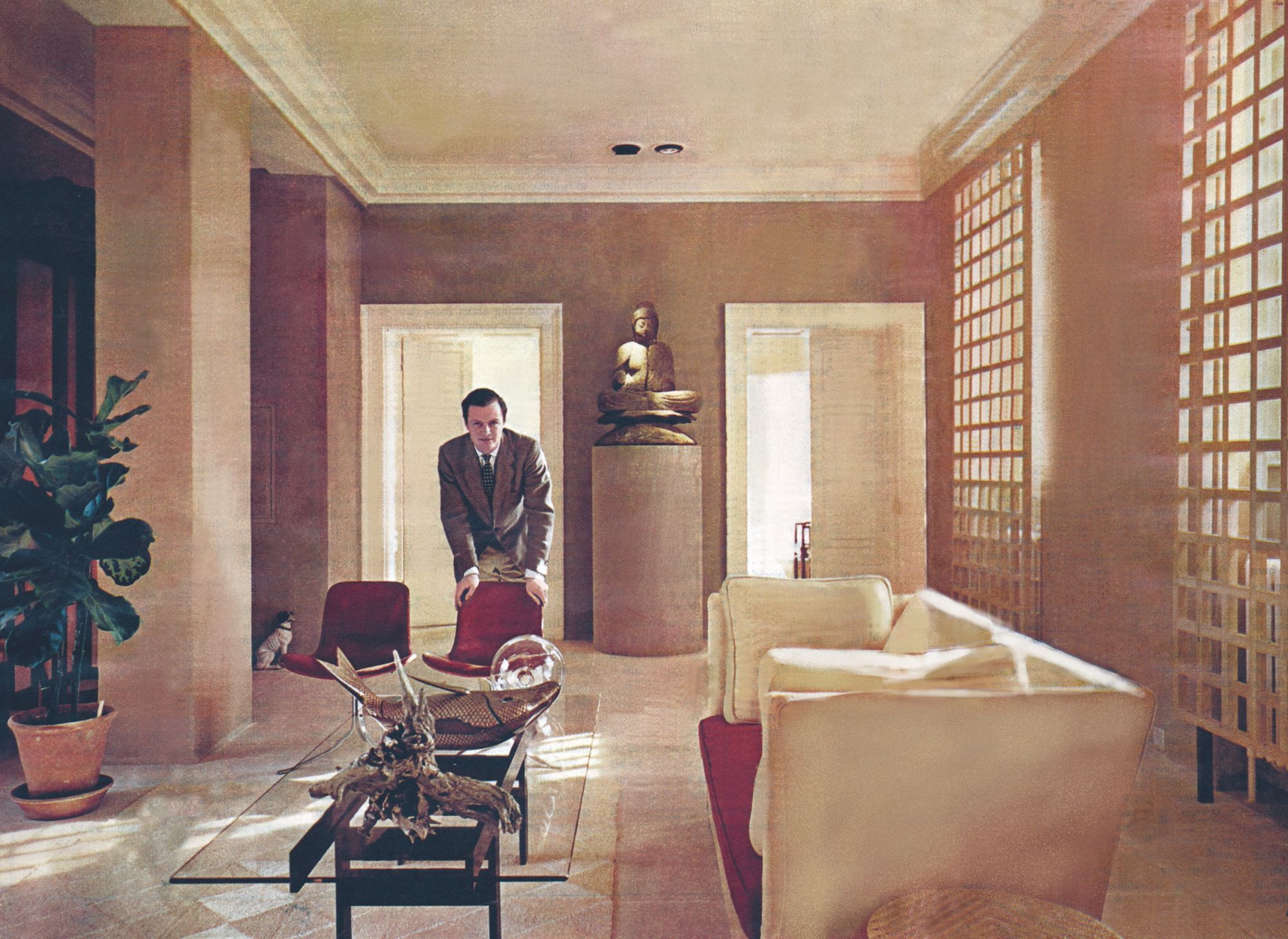
DAVID HICKS/ GARDEN ROOM IN BRITWELL HOUSE IN OXFORDSHIRE, C. 1964
Photo © The David Hicks Archive; courtesy of Rizzoli New York
There is no doubt that David Hicks was a modernist at heart and that his design language was far more forward-facing than is commonly recognized. He was responsible for moving elite English interiors into the modern era through a distinctive graphic identity that was at once radical and chic—and he did so fearlessly. According to Ashley, the confidence that David exudes in the 1964 Britwell House portrait was nearly ever present. “He did not need to test his ideas, because he knew,” Ashley said, adding that it was not until late in life that David began to cast a critical eye onto his past work.
Ashley shared an amusing story about his first design project, which was offered to him by his father. In 1979, when his family moved from Britwell House to The Grove, another country house in Oxfordshire, David asked sixteen-year-old Ashley if he wanted to decorate his own bedroom. Ashley accepted the challenge with verve, selecting black walls, black carpeting, and white furniture; the only color in the room came from the green landscape visible through the windows. When the home was photographed in the World of Interiors, David was credited with the design of his son’s room.
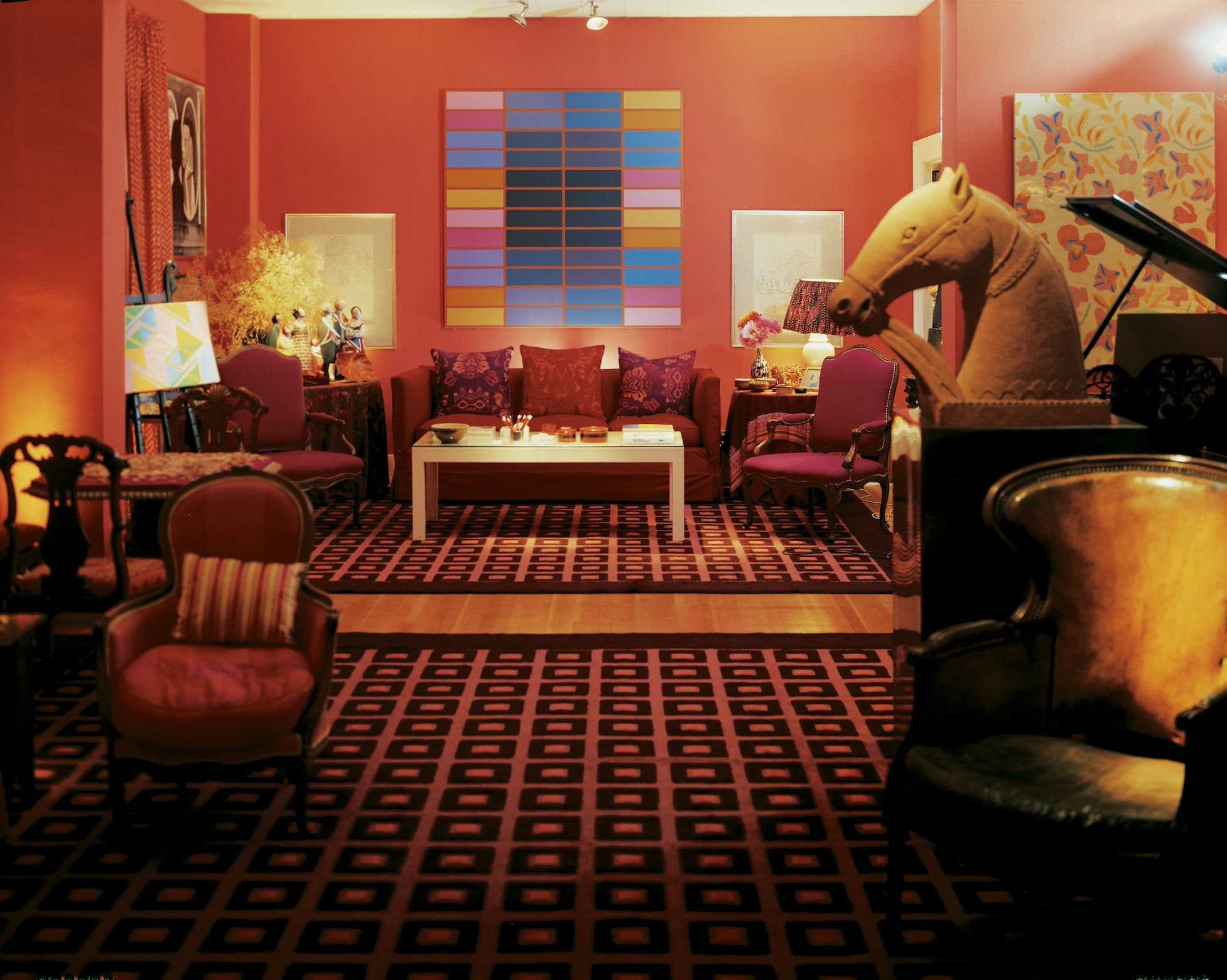
DAVID HICKS/ LONG ROOM IN BRITWELL HOUSE IN OXFORDSHIRE, C. 1960S
Photo © The David Hicks Archive; courtesy of Rizzoli New York
Born in Essex in 1929, the son of a stockbroker, David Nightingale Hicks was educated at Charterhouse School in Surrey and Central School of Arts and Crafts in London. After serving briefly in the British Army, he launched his career as a decorator in 1954. For his first project, the decoration of his mother’s house, David rejected the chintz typical to English interiors at the time in favor of solid fabrics. The results were featured in House & Garden, cementing his reputation for originality. According to Ashley, it was clear from the beginning that David intended to forge his own voice in the world of interiors.
When David was a young man, he came across a magazine cover featuring Lord and Lady Mountbatten, members of the British Royal family, and thought, “this is the best looking couple I have ever seen.” He pinned the image to his bedroom wall, unaware that, a few years later, his life would change forever when he married the couple’s daughter, Lady Pamela. David’s wife introduced him to aristocratic living, which included extensive world travel and opened countless professional doors.
David had a great admiration for the US, especially the way American interior decorators were perceived as serious professionals. He also loved the modernist approach to interior design that suffused the US in the postwar era. At the same time, though, he was attracted to the material culture of India, where his father-in-law, 1st Earl Mountbatten of Burma, was the last Viceroy before the country won independence in 1947. In India’s rich handcraft and textile traditions, David found endless inspiration, and he often had brightly colored rugs made to order in Jaipur.
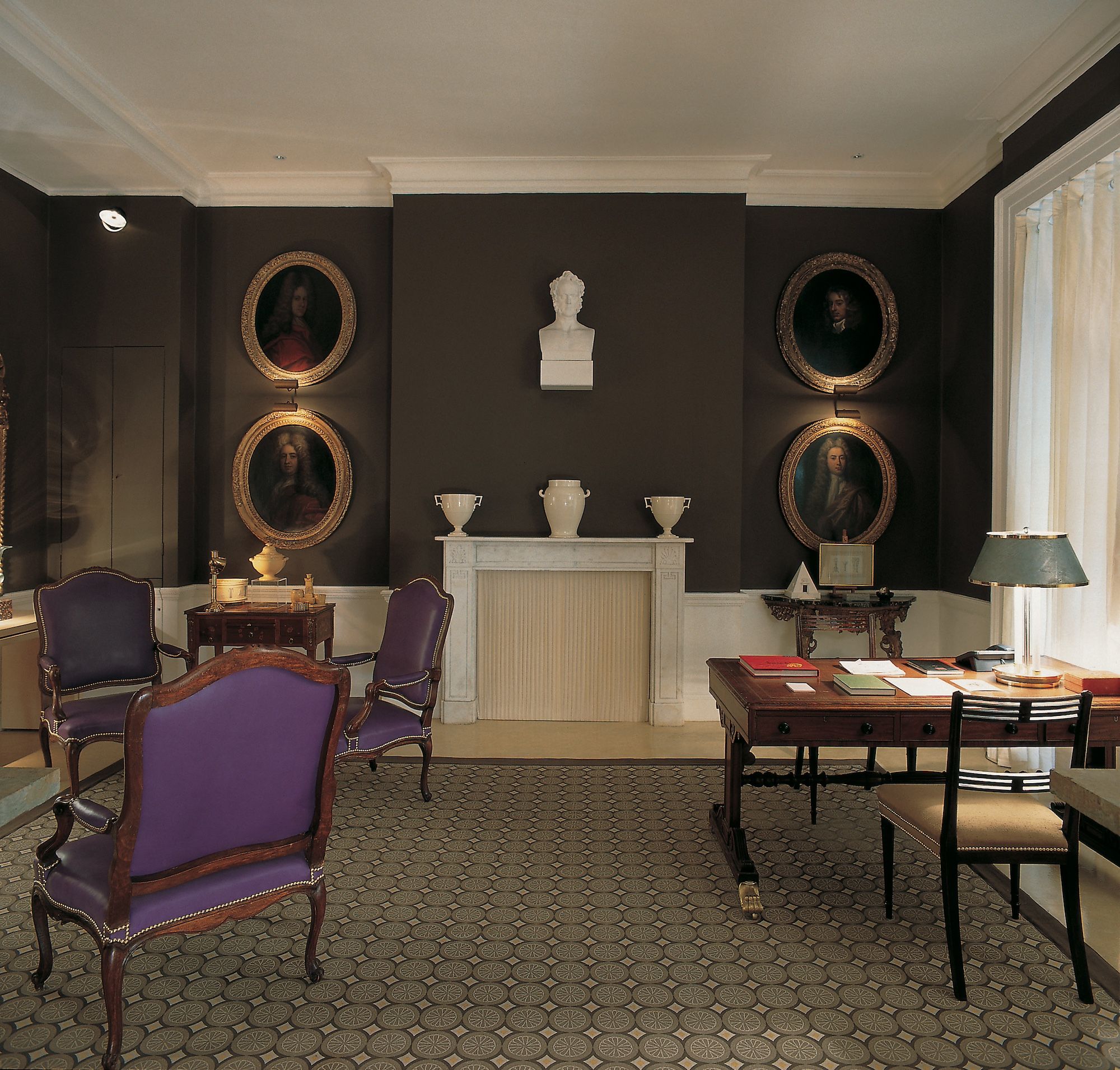
DAVID HICKS/ APARTMENT AT ALBANY IN LONDON, 1995
Photo © The David Hicks Archive; courtesy of Rizzoli New York
In London, Hicks famously lived in Albany, an 18th-century mansion in Piccadilly that was converted into a super prestigious apartment complex in the 19th century—the setting of many novels and films as well as the real-life home to such luminaries as Lord Byron and Sir Norman Foster. Hicks was introduced to Albany when was invited to a dinner by a tenant, photographer Antony Armstrong-Jones.
David’s home in Albany was situated behind the main house of the complex, in one of the units originally intended for bachelors. David decorated the interiors of his Albany home twice. In the 1960s, he emphasized vibrant colors. In the 1990s, he opted for more neutral tones, in line with the tastes of the time.
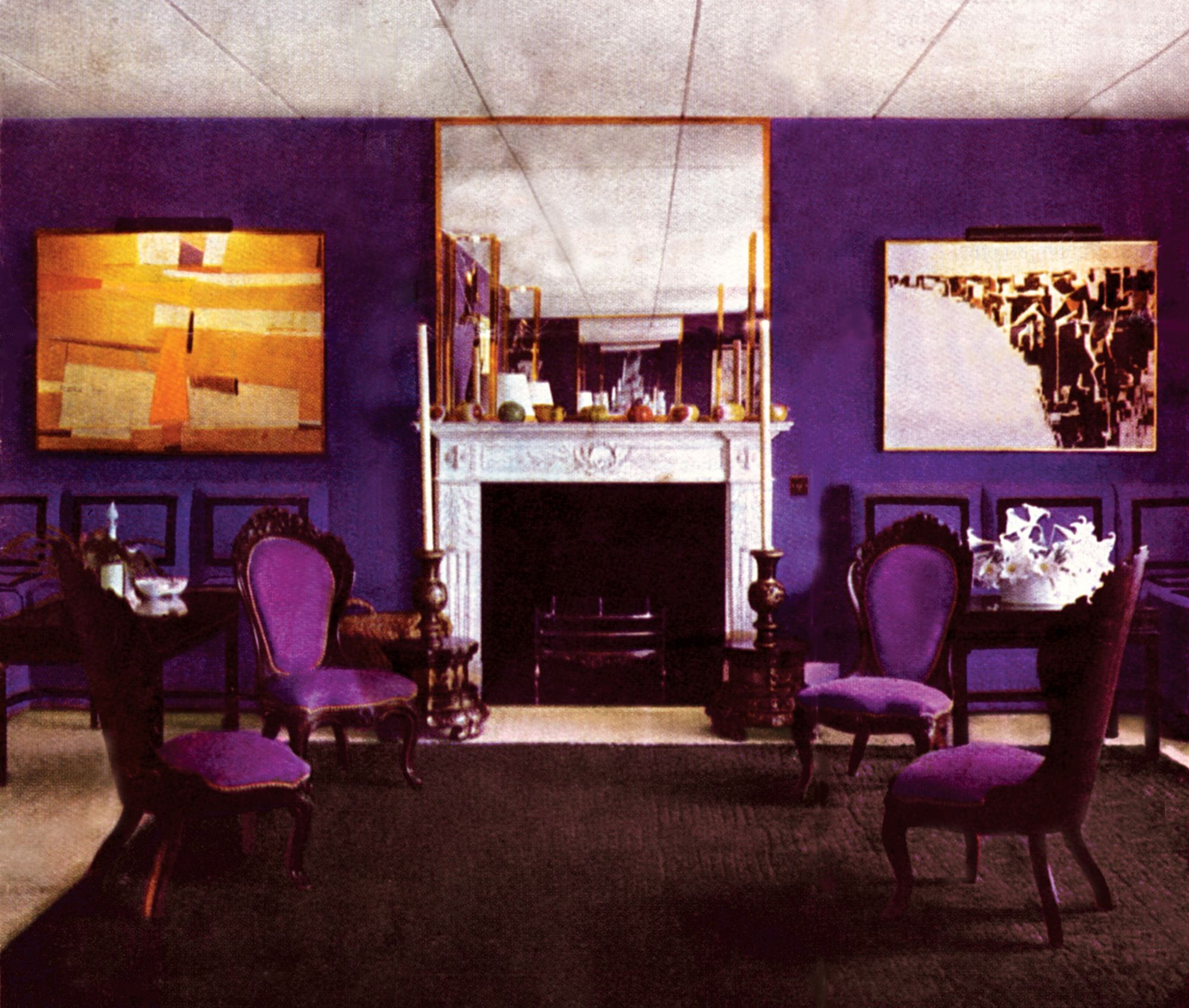
DAVID HICKS/ HELENA RUBINSTEIN'S APARTMENT IN LONDON, C. 1960S
Photo © The David Hicks Archive; courtesy of Rizzoli New York
The interiors created for cosmetics entrepreneur Helena Rubinstein are among the most publicized of David’s work. The two met in Paris in the early 1960s, and the 83-year-old “madam,” as she was called, commissioned David to decorate her newly acquired London apartment, incorporating her collection of 19th-century furniture by John Henry Belter. In their initial consultation, David asked Rubinstein if she had a color scheme in mind. As she reclined on her chaise in a deep purple Balenciaga dress, she called for her assistant to bring some scissors and cut a swatch from her skirt as a guide for David’s work.
David’s signature design language fully emerged in the 1960s and ’70s, at the height of his career, when his unique sensibility most strongly resonated with the wider zeitgeist. This is when his hallmark electrifying color palettes, bold patterns, and unconventional combinations of old and new rose to the forefront. This is also when David Hicks became a lifestyle brand, complete with a line of textile and furniture designs available to the public through his eponymous shops around the world.
With a keen understanding of both his audience and the power of publicity, David promoted his lifestyle and professional persona as one in the same. Beyond Helena Rubinstein, his elite client roster included Vidal Sassoon, Condé Nast, Douglas Fairbanks, Jr., the King of Saudi Arabia, and the Prince of Wales, to name a few.
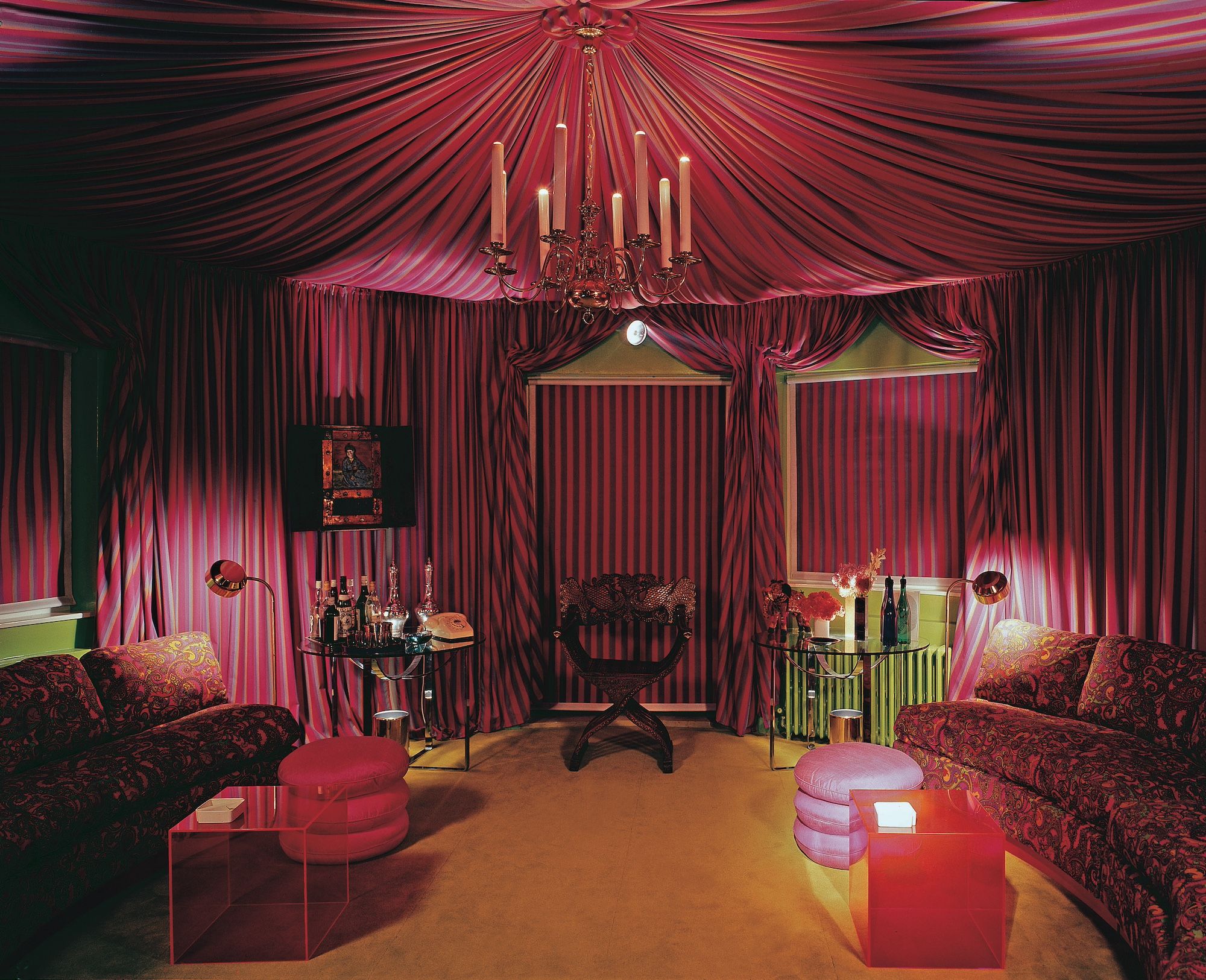
DAVID HICKS/ CIRCULAR TENTED LIVING ROOM IN SUSSEX, 1971
Photo © The David Hicks Archive; courtesy of Rizzoli New York
Packed with archival materials, personal photographs, journal and scrapbook entries, and behind-the-scenes stories, Ashley’s newly reissued publication is not only an encyclopedic reference for understanding David’s life and work, it’s also an exemplar of what a design history book should be.
The book’s cover art is a photograph taken by Derry Moore that presents David looking majestic, elegant, and gratified, seated on an antique gilt swan chair in an all-red room in his London home. Ashley revealed that another photographer, John Spragg, played a key role in preserving David's legacy.
Over the years, Spragg photographed a sizable portion of the interiors in David's portfolio, but toward the end of David's life, Spragg called to say he could no longer hold on to the transparencies. David told him to throw it all away. Thankfully, Spragg thought to call Ashley before carrying out the flippant request, and the photographs now fill the pages of Ashley's book.
“My greatest contribution as an interior designer,” David once remarked, “is to show people how to use bold color mixtures, how to use patterned carpets, how to light rooms, and how to mix old with new.” But from the vantage point of today, it’s clear that David’s impact on interior design history is so much more.
To watch Ohad’s Interior Design: Then and Now webinar program live, register here.
David Hicks: A Life of Design by Ashley Hicks is available through Rizzoli and bookstores everywhere.
You can find Manhattan Stones, an exhibition of Ashley’s Hicks’ work, currently on view at R & Company in New York through August 9, 2024.

